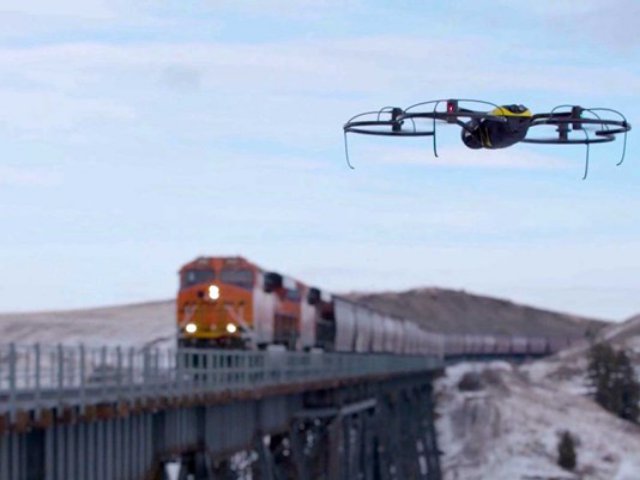Burlington Northern Santa Fe Railway became part of the Federal Aviation Administration’s Pathfinder Program in creating a frame work for the commercial use of drones.
On the Everett waterfront, BNSF demonstrated the use of small drones, also known as Unmanned Aircraft Systems (UAS), to inspect the seawall that holds up the tracks as they run along the water.
The railroad is using the drones, equipped with cameras capable of ultra high definition video cameras, to inspect the tiniest details and look for any signs of trouble. The railroad also uses the drones to inspect bridges, especially underneath, and in some cases even trains themselves.
It’s not that people haven’t been inspecting seawalls and bridges – human inspectors are still required. Drones can allow them to cover ground faster, identify problem areas quicker, and get a view and perspective they couldn’t get before, such as inspecting the seawall by moving from the water over the tracks, instead of relying from one angle aboard a boat and another angle by foot or aboard a rail mounted truck.

Burlington Northern Santa Fe railroad became part of the Federal Aviation Administration’s Pathfinder Program in creating a frame work for the commercial use of drones. (Photo: BNSF)
The railroad’s Bruce Teel, who is a manager of roadway planning, says the drones make inspections safer for employees, such as spending less time hanging from ropes under bridges, lessening the risk of falling, and other hazards.
Under the Pathfinder program, commercial users could fly with an exemption from the FAA. Recent months saw the first legal commercial uses for drones, although hobbyists have not been as restricted.
The basics of the new commercial rules restrict drones to a weight of less than 55 pounds. The operator must also be licensed to fly them and maintain visual contact with the drone all while maintaining an altitude below 400 feet. Drones also cannot be flown over populated areas.
The next steps in expanded flight could include flying heavier drones out of sight, along with higher altitudes, but those ideas are still under study.
Source: King5
